
Chin Choeun, 54, collects sap from a palm tree during harvest season at Trapang Ampel village, outside Phnom Penh, Cambodia, Friday, March 15, 2024. Choeun spends nearly 12 hours a day collecting sap from palm trees that he and his wife turn into palm sugar. (AP Photo/Heng Sinith)
PHNOM PENH, Cambodia (AP) - Chin Choeun spends nearly 12 hours a day collecting sap from palm trees that he and his wife turn into palm sugar.
The 54-year-old boasts of being one of Cambodia's most skilful palm tree climbers, having learned the skill from his father. But after 36 years scaling tree after tree, Choeun plans to retire in the next couple of years, because of age-related safety concerns.
"It was a job that I took over from my father. It was his legacy, and I don't want it to end because of me. but I know that it will be over after me," Choeun said.
The job is not appealing to his sons and grandsons because it is both hard work and it is dangerous.
Young people in Cambodia's rural areas have more options for earning a living, unlike Choeun's generation, which had only farm work. Many have moved away in search of jobs in big cities, and even to other countries like Thailand, South Korea or Japan.
"I regret that my sons and grandsons cannot succeed me, but I respect their decision," said Choeun, who has four children and 10 grandchildren.
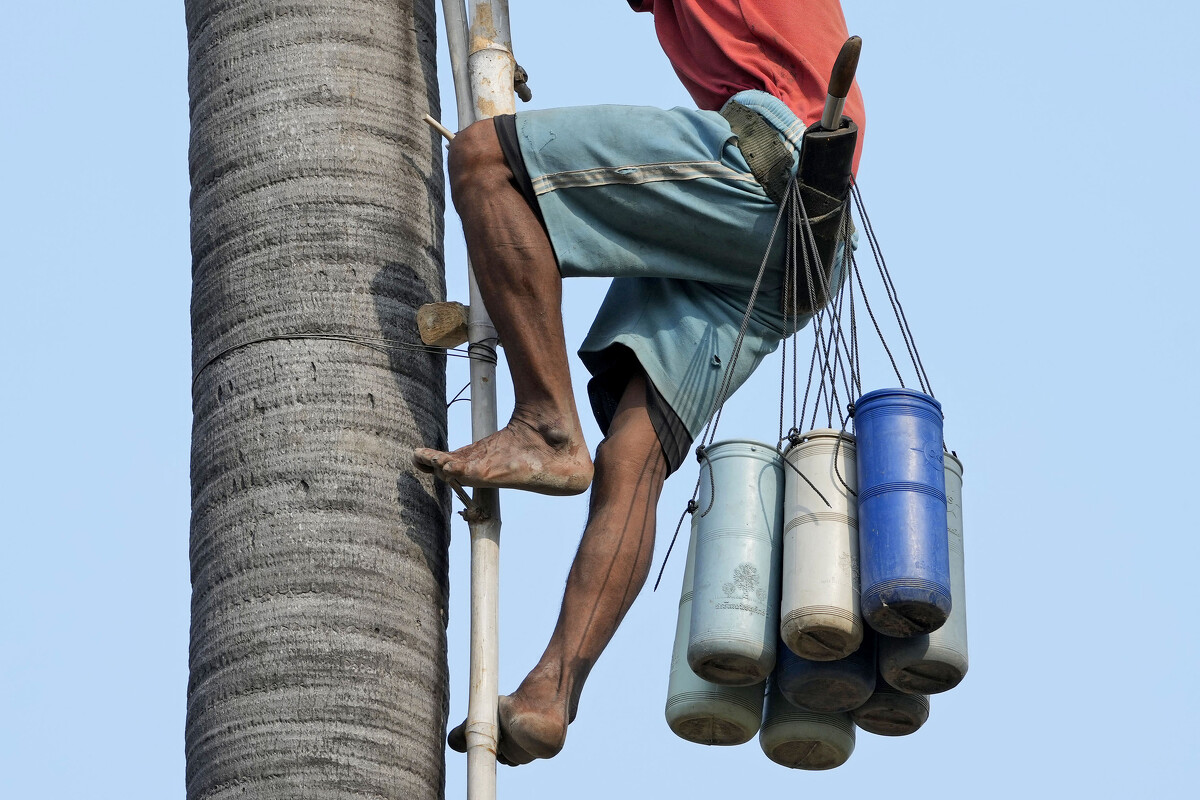
Chin Choeun, 54, climbs down a palm tree with sap collected at Trapang Ampel village, outside Phnom Penh, Cambodia, Friday, March 15, 2024. Choeun spends nearly 12 hours a day collecting sap from palm trees that he and his wife turn into palm sugar. (AP Photo/Heng Sinith)

Chin Choeun, 54, cuts palm flowers to extract its sap during harvest season at Trapang Ampel village, outside Phnom Penh, Cambodia, Friday, March 15, 2024. Choeun spends nearly 12 hours a day collecting sap from palm trees that he and his wife turn into palm sugar. (AP Photo/Heng Sinith)
A climber cuts into the stump that holds the fruit and ties it with a bamboo container to let the sap collect overnight. The next morning, another climb is made to collect the sap. This is then cooked in a giant pot and slowly kneaded with a wooden stick until it thickens.
The job is demanding. Choeun works from 6 in the morning to 6 in the evening, climbing 20 palm trees to collect sap. His wife, Chin Ith, boils the sap over an open fire, stirring it until the right consistency is achieved.

Chin Ith, left, adjusts a vessel of palm sap onto a fire to make palm sugar at Trapang Ampel village, outside Phnom Penh, Cambodia, Friday, March 15, 2024. (AP Photo/Heng Sinith)
The sap he collects in one day produces roughly 10 kilos (22 pounds) of sugar. Choeun earns about 100,000 riel ( $25) a day from selling sugar to local vendors.
Palm trees also have other key roles in the daily life of Cambodians, especially in the countryside. Palm leaves are used for roofing, hats, mats and baskets, and the trunk can be processed into boats, furniture, souvenirs and houses. The palmyra fruit is used in desserts like palm cakes, and the flowers can be made into sweet palm juice and even produce alcoholic drinks.
The palm tree is considered the official tree of Cambodia. According to unofficial figures, 3 million to 6 million wild palm trees grow naturally throughout the country, though the felling of the trees is becoming common as urban areas expand.

Chin Ith boils palm juice to turn it to sugar at Trapang Ampel village, outside Phnom Penh, Cambodia, Friday, March 15, 2024. Her husband Chin Choeun collects sap from palm trees, which produces roughly 10 kilos (22 pounds) of sugar daily. They earn about 100,000 riel ( $25) a day from selling the sugar to local vendors. (AP Photo/Heng Sinith)
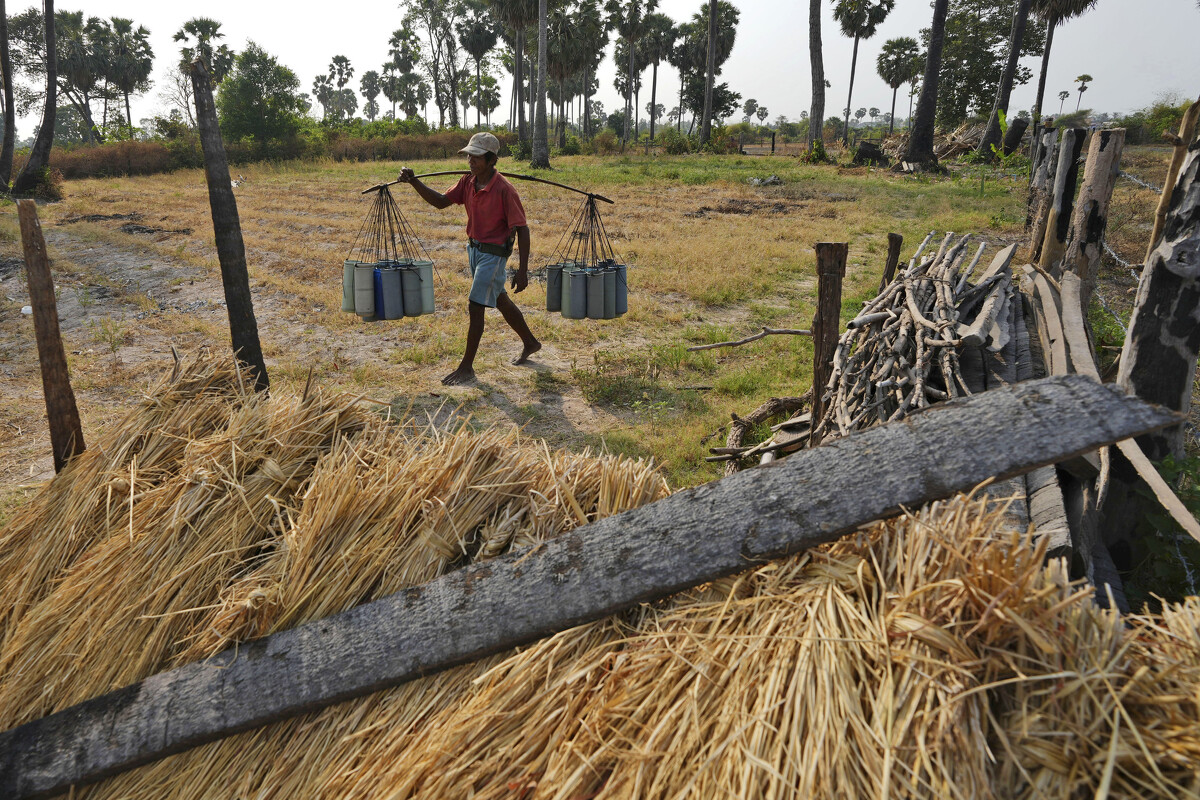
Chin Choeun, 54, walks with sap collected from palm trees at Trapang Ampel village, outside Phnom Penh, Cambodia, Friday, March 15, 2024. (AP Photo/Heng Sinith)

Chin Ith checks the consistency of palm sugar being made from the sap of palm at Trapang Ampel village, outside Phnom Penh, Cambodia, Friday, March 15, 2024. (AP Photo/Heng Sinith)

Chin Ith gathers palm sap collected from palm trees by her husband Chin Choeun, center, at Trapang Ampel village, outside Phnom Penh, Cambodia, Friday, March 15, 2024. Ith boils the sap over an open fire, stirring it until the right consistency of palm sugar is achieved. (AP Photo/Heng Sinith)
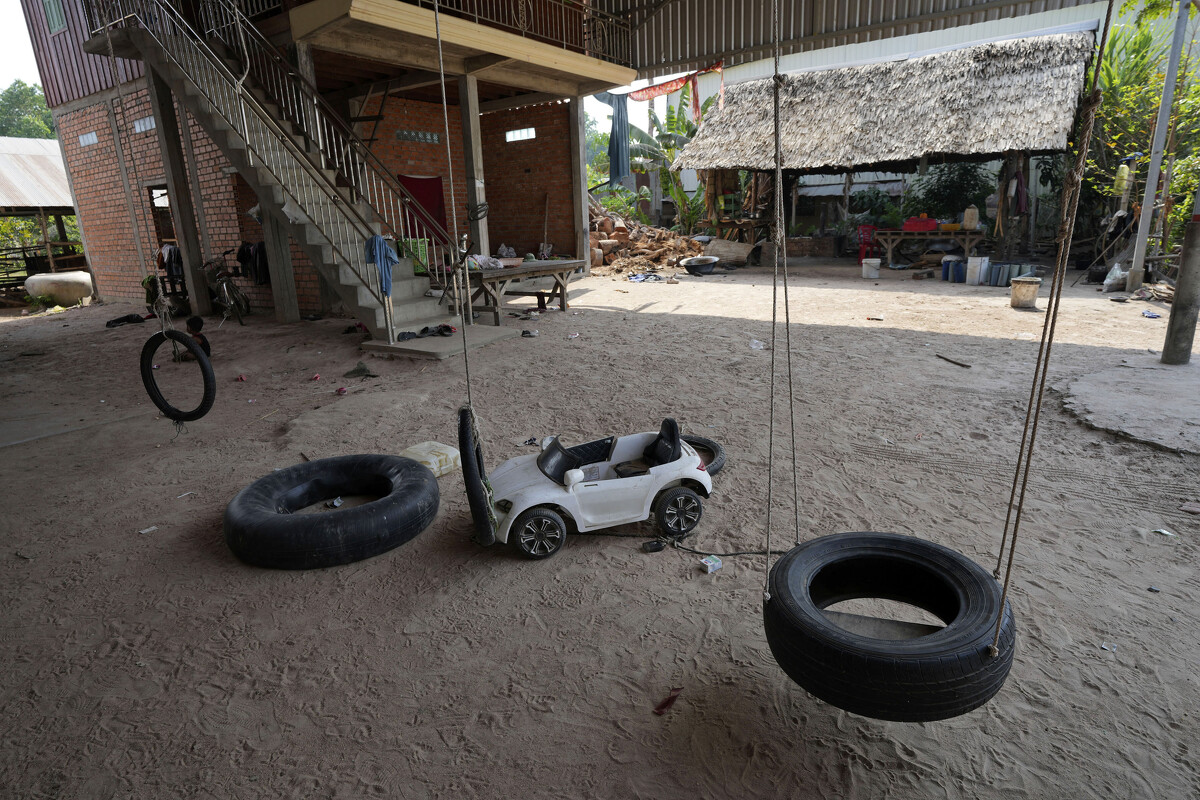
Swings made from tire hang in the house of palm sugar farmer Chin Choeun at Trapang Ampel village, outside Phnom Penh, Cambodia, Friday, March 15, 2024. (AP Photo/Heng Sinith)
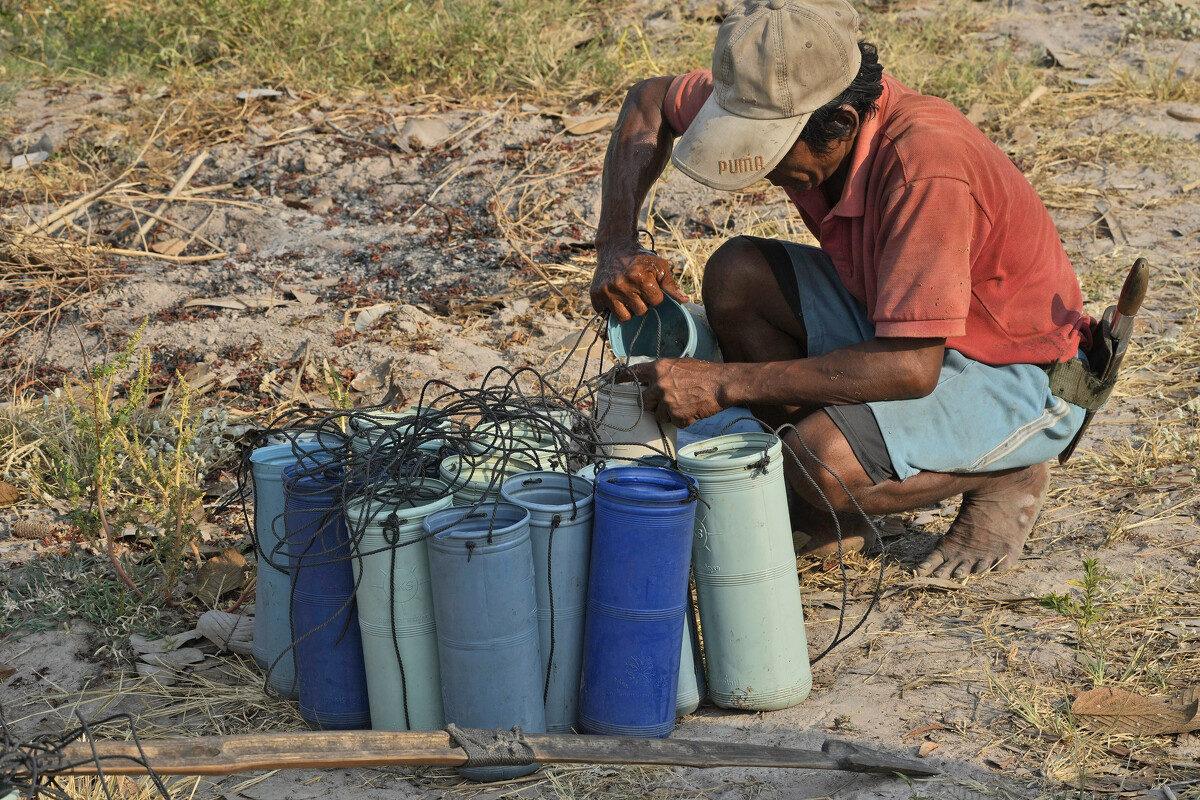
Chin Choeun, 54, gathers sap collected from palm trees to make sugar during harvest season at Trapang Ampel village, outside Phnom Penh, Cambodia, Friday, March 15, 2024. (AP Photo/Heng Sinith)
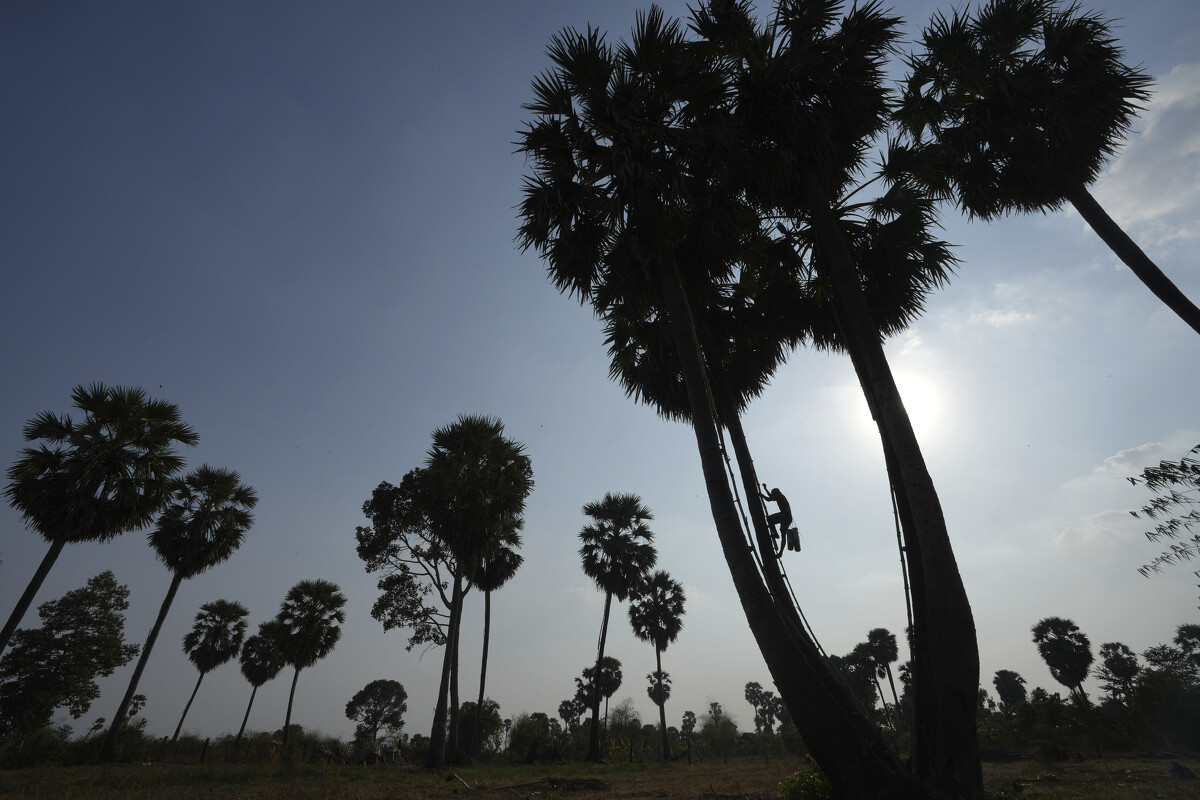
Chin Choeun, 54, climbs down a palm tree at Trapang Ampel village, outside Phnom Penh, Cambodia, Friday, March 15, 2024. Choeun spends nearly 12 hours a day collecting sap from palm trees that he and his wife turn into palm sugar. (AP Photo/Heng Sinith)
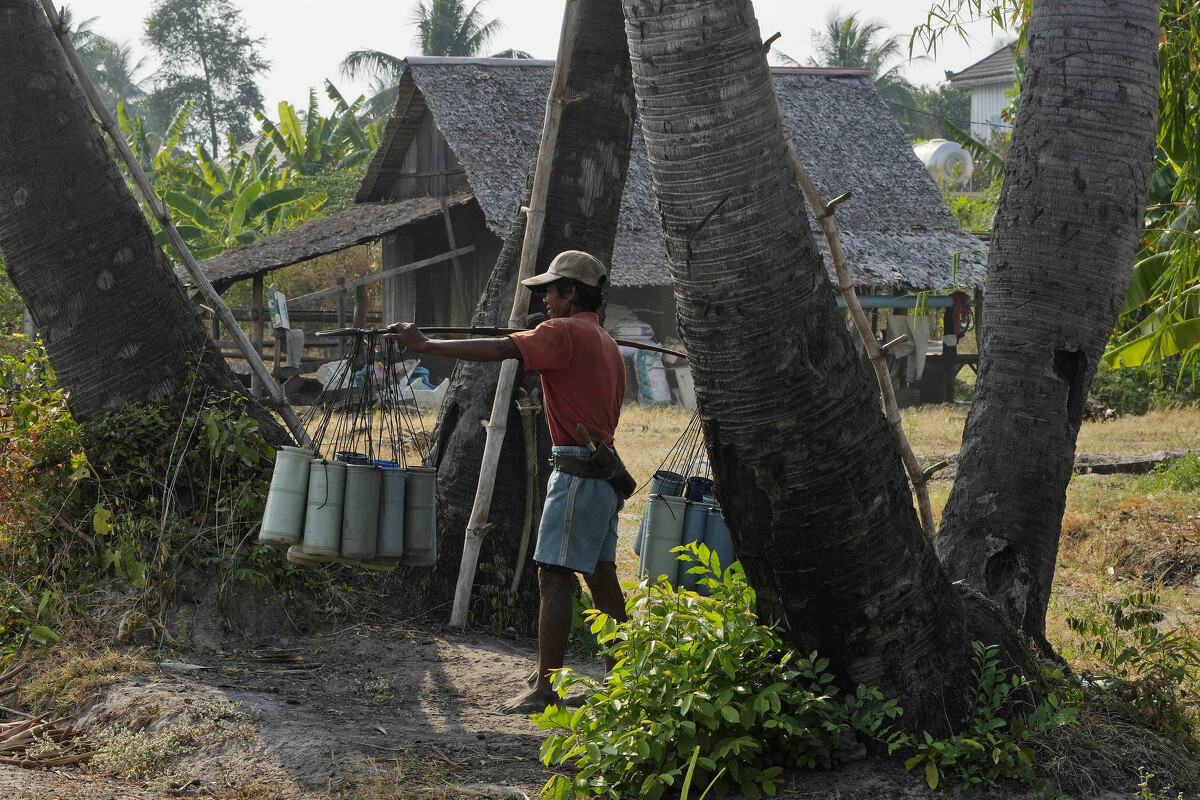
Chin Choeun, 54, walks with sap collected from palm trees to make sugar, during harvest season at Trapang Ampel village, outside Phnom Penh, Cambodia, Friday, March 15, 2024. (AP Photo/Heng Sinith)
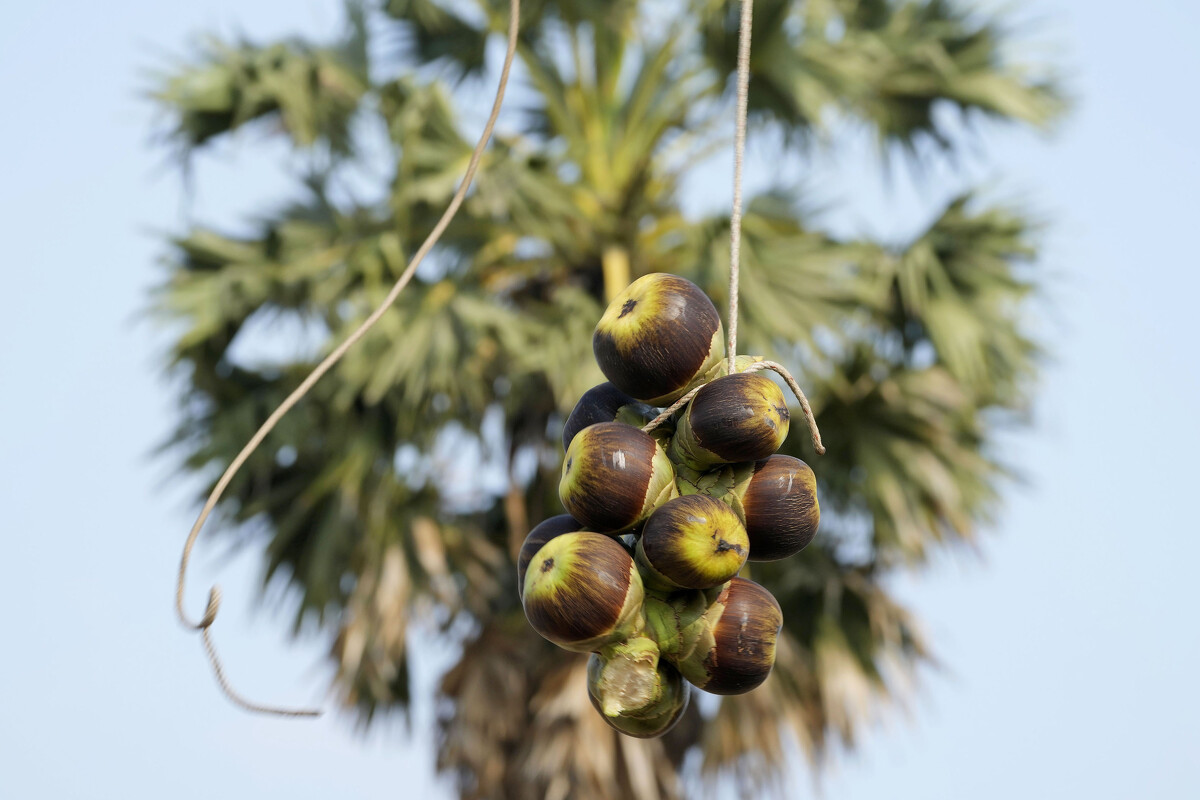
A farmer drops palm fruit from a tree during sap harvest season at Trapang Ampel village, outside Phnom Penh, Cambodia, Friday, March 15, 2024. The palm tree is considered the official tree of Cambodia. (AP Photo/Heng Sinith)